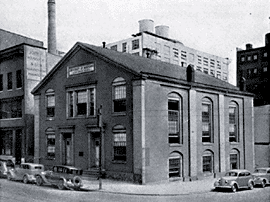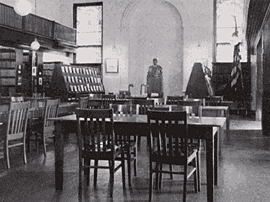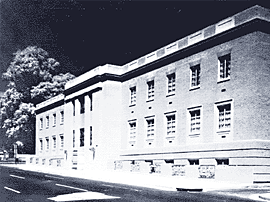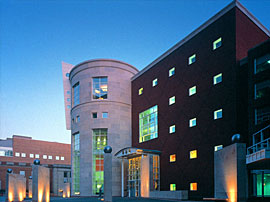
601 West Lombard Street
Baltimore MD 21201-1512
Information Services: 410-706-7995

601 West Lombard Street
Baltimore MD 21201-1512
Information Services: 410-706-7995
Your off-campus access to the library's e-resources has been activated for this browser session!
The proud traditions of the Health Sciences & Human Services Library originated in 1813. Until that date, the medical school had not had a library, from the time of its founding in 1807 as the College of Medicine of Maryland. Doctor John Crawford, a prominent Baltimore physician and member of the faculty, was the owner of a fine medical library. Following his death in 1813, his faculty colleagues pooled their financial resources to purchase the collection from his estate. The Crawford Collection in the Health Sciences & Human Services Library represents the origin of the entire University of Maryland Library System.
Reflecting his interest in natural history, and influenced by his professional assignments as a British naval surgeon in such tropical locales as Barbados and the Dutch colony of Demerara, Crawford's library showcases the works of such classical figures as Hippocrates, Celsus, Vesalius, and Malpighi, as well as more contemporary notables like Linnaeus and Boerhaave. Holdings include imprints from as early as 1565, and continuing through the beginning of the nineteenth century. Numbering 569 volumes, the Crawford Collection remains today one of the focal treasures of the Library.
At first, the Library resided in the Provost's Office within the original medical school building, the building now known as Davidge Hall. And during its earliest years, various faculty and hospital staff members served as acting librarians. But in 1903, Doctor Eugene F. Cordell, Professor of the History of Medicine and eminent medical historiographer, accepted the formal appointment as librarian. Under his able leadership, the library grew dramatically in size and scope, becoming an integral part of the school's identity. At some point during those formative years, book collections from the Schools of Dentistry and Pharmacy merged into the Medical Library. With the expansion of the schools, and the corresponding growth of the Library, Dr. Cordell successfully guided it into more spacious quarters before his death in 1913.


The southeast corner of Lombard and Greene Streets, directly across from the medical school building, was the site of a church. The University purchased the structure to house its library, and christened it Davidge Hall after founder and first dean John Beale Davidge. But further expansion of the schools ensued, and additional buildings meant that some of the collections emigrated back to their individual schools.
Near the end of the 1930's, a change in the library administration throughout the whole University attempted to resolve the awkwardness of managing separate detached libraries. In the mean time, the medical collection housed in Davidge Hall continued to grow fruitfully. In 1937, the Library first began to circulate books, redefining its role of mere storehouse into one more consistent with the concept of access and usage.

By the 1950's, the Library again had exceeded its capacity and required more space. The church building was razed in 1957, to make room for the new Health Sciences Library building, which began construction in 1958 and successfully opened in 1960. In conjunction with designing that facility, the University decided to consolidate the collections and activities of the various satellite libraries into a more efficient combined operation. Along with re-integrating medicine, nursing, dentistry, and pharmacy at its opening, the Health Sciences Library would also serve the campus's new School of Social Work in the following year.
Ten years later, the era of computer automation arrived, as the Health Sciences Library introduced a batch-process book circulation system in 1970. Technological advances continued onward, as MEDLINE literature searching appeared in 1972. Then in 1978, the Library's membership as part of the OCLC bibliographic utility re-defined its cataloging activities in the new light of international cooperation.
In 1982, the Integrated Library System combined the automated functions of circulation and the online catalog into a single system, thereby heralding the demise of the card catalog. It was this and other continuing technological innovations in countless facets of its dynamic information and support services that led to the Library earning its status as Regional Medical Library for the Southeastern/Atlantic Region.

With an eye toward mastering the accelerated demands of the information future, the Health Sciences and Human Services Library opened in 1998 in an unprecedented, multi-functional, comprehensive library/information services facility. Ever dedicated to technological advances, and with Crawford's timeless treasures still proudly enshrined within its walls, the new Library is a true testament to an excellence that spans the centuries.

E. Rebecca Griffith(Dental Librarian) 1930's |
|

E. Rebecca Griffith(Dental Librarian) 1930's |